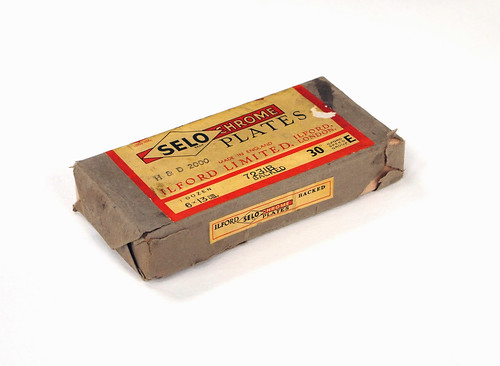 |
| Ilford Selochrome Plates |
Although my ongoing project of shooting old, previously unexposed photographic glass plates at night had become more sporadic in recent months (and I had been shooting plates in other situations such as the
LAPC Photo Walk), a period of unseasonably warm nights last Autumn into December encouraged me to shoot more. Of the plates shot recently, a box of previously unopened Selochrome 6x13cm plates provided some interesting results due in part to the unusual format: the 6x13cm plate size is a stereo format; the box is the same size as the HP3 plates written about in the post '
Some odd sized glass plates', but those plates had been cut down by hand to a quarterplate length. The outer wrapping of the plates was torn and tatty, and the outer label itself isn't designed for the box: it's the same size as those used on 4x5 inch boxes, such that the label wraps around the box. The inner label under the wrapping is dated to February 1948.
As the plates are just a few millimetres too long to fit into 4x5 inch plates holders (5 inches being 127mm, although actual plate sizes vary a small amount), I converted two MPP holders which needed reconditioning. I made a cut in the bottom edge of the holders, which, being made from wood, was fairly easy to do, and removed enough material to sit the glass plates flush once loaded. These alterations were then painted matt black.
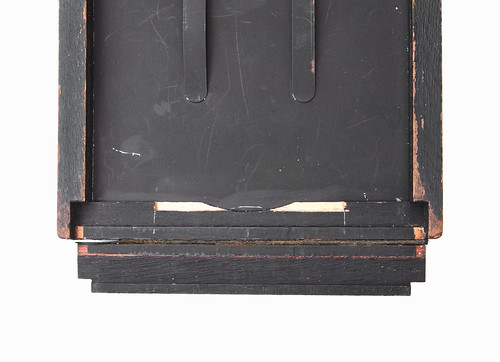 |
| Detail of cut in bottom of holder |
Interestingly, when removing the metal covers on the plateholders to access the felt light traps, I discovered that they had a similar slot already cut into the top edge of the holder, normally invisible. This was almost exactly the right size for the stereo plates.
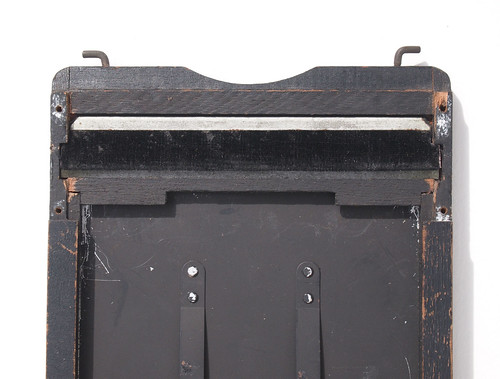 |
| Detail of slot in top of holder |
I also found that some
printed matter had been used to shim the metal covers to the right clearance for the darkslides, intriguing evidence of the hand-made nature of these wooden plateholders. To make sure the stereo plates sat securely in place, I also made card inserts in the manner detailed in my post on
'Glass plate adaptors'; I sacrificed one of the plates from the box as a template to ensure a good fit with both the alterations to the holders and the adaptors I'd made.
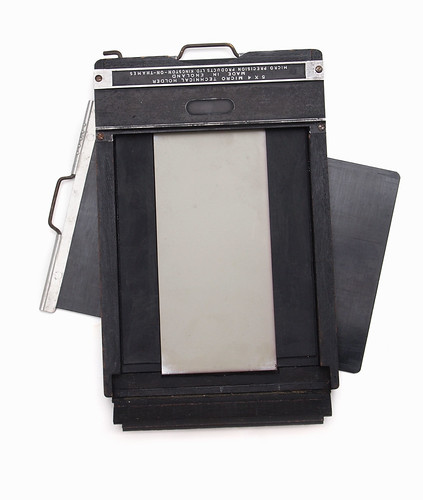 |
| Completed conversion with plate loaded |
Having used some
4x5 Selochrome plates before, of a similar age, I was hopeful that the box would contain usable plates; I shot a test plate with a starting exposure index of 50, and with three successive exposures on the plate, giving effective exposure indices of 50, 25, 12 from left to right,
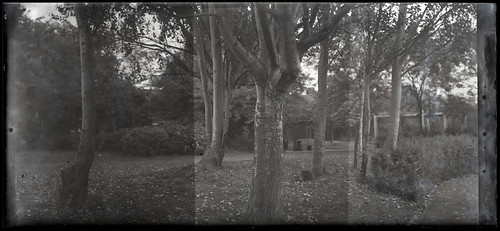 |
| Ilford Selochrome stereo plate test |
The plates do show a number of features of age-related deterioration (aside from a broken corner) to the emulsion, although this was not consistent across the plates: some have a large amount of pinholing, while a couple have what appears to be 'star-burst' shapes of the emulsion lifting around a central point of stress. Most of the plates have strips along the edges where there's been a reaction to the cardboard runners holding the plates in pairs, although this is within the width of the rebate from the plateholders.
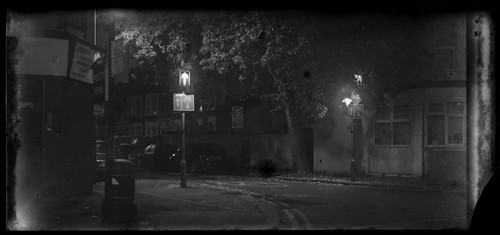 |
| Ilford Selochrome plate shot with 16.5cm Tessar |
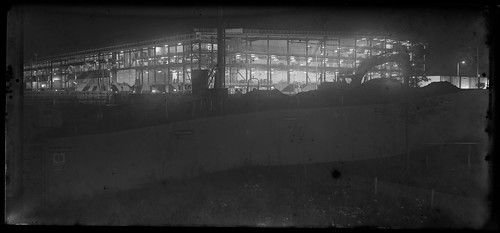 |
| Ilford Selochrome plate shot with 150mm Xenar |
 |
| Ilford Selochrome plate shot with 150mm Xenar |
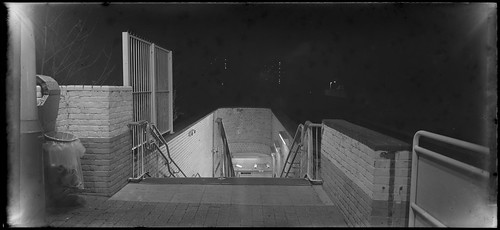 |
| Ilford Selochrome plate shot with 90mm Angulon |
Given that the stereo plate dimensions appear somewhat panoramic, I shot some of the plates with a 90mm Angulon lens - a lens I've hardly ever used for large format - which seemed more appropriate with the format (some stereo plate cameras, such as the
Jumelle Stéreo-panoramique were designed to shoot both stereo pairs or single, panoramic images). I also used these plates to shoot three photographs of the rebuilding of a local station which has been disused for over thirty years.
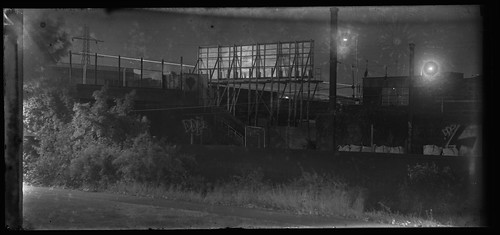 |
| Ilford Selochrome plate shot with 16.5cm Tessar |
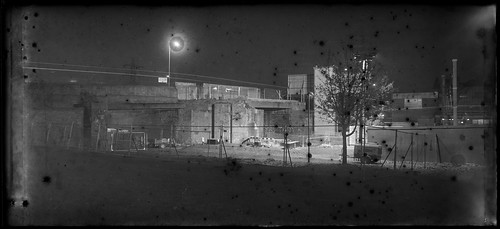 |
| Ilford Selochrome plate shot with 90mm Angulon |
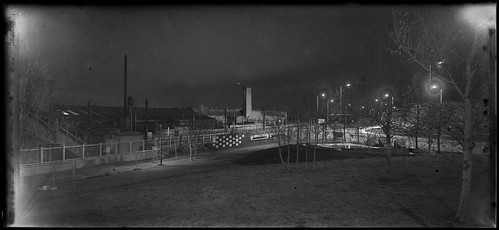 |
| Ilford Selochrome plate shot with 90mm Angulon |












No comments:
Post a Comment